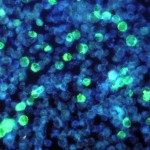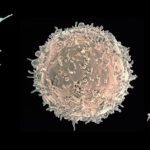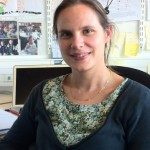Yan Li’s paper on the cellular mechanisms of IL-2 therapy in humanized mice was recently published in Nature Communications.
Regulatory T cells control toxicity in a humanized model of IL-2 therapy.
Nat Commun. 2017 Nov 24;8(1):1762. doi: 10.1038/s41467-017-01570-9.
Yan Li (1)(2), Helene Strick-Marchand (1)(2), Ai Ing Lim (1)(2), Jen Ren (3), Guillemette Masse-Ranson (1)(2), Dan Li (3)(4), Gregory Jouvion (5), Lars Rogge (6), Sophie Lucas (7), Bin Li (3)(4), James P Di Santo (1)(2).
- Institut Pasteur, Innate Immunity Unit, Immunology Department, Paris, France.
- Inserm U1223, Paris, France.
- Key Laboratory of Molecular Virology and Immunology, CAS Center for Excellence in Molecular Cell Science, Unit of Molecular Immunology, Institut Pasteur of Shanghai, Shanghai Institutes for Biological Sciences, Chinese Academy of Sciences, 200025, Shanghai, China.
- Shanghai Institute of Immunology, Shanghai JiaoTong University School of Medicine, 200025, Shanghai, China.
- Institut Pasteur, Human Histopathology and Animal Models Unit, 75724, Paris
- Institut Pasteur, Immunoregulation Unit, Immunology Department, 75724, Paris
- de Duve Institute, Université Catholique de Louvain, and WELBIO, B1200, Brussels, Belgium.
While patient selection and clinical management have reduced high-dose IL-2 (HDIL2) immunotherapy toxicities, the immune mechanisms that underlie HDIL2-induced morbidity remain unclear. Here we show that dose-dependent morbidity and mortality of IL-2 immunotherapy can be modeled in human immune system (HIS) mice. Depletion of human T cell subsets during the HDIL2 treatment reduces toxicity, pointing to the central function of T cells. Preferential expansion of effector T cells secondary to defective suppressive capacity of regulatory T (Treg) cells after HDIL2 therapy further underscores the importance of Treg in the maintenance of immune tolerance. IL-2 toxicity is induced by selective depletion or inhibition of Treg after LDIL2 therapy, and is ameliorated in HDIL2-treated HIS mice receiving the PIM-1 kinase inhibitor, Kaempferol. Modeling IL-2 pathophysiology in HIS mice offers a means to understand the functions of effector and regulatory T cells in immune-mediated toxicities associated with cancer immunotherapy.
DOI: 10.1038/s41467-017-01570-9
PMID: 29176694




